 |
 |
 |
| |
Longitudinal Changes in Free Testosterone among Older HIV-infected and HIV-uninfected Men
|
| |
| |
Reported by Jules Levin
Presented at the 16th International Workshop on Co-morbidities and Adverse Drug Reactions in HIV 6 October 2014, Philadelphia USA
L. Slama *1,3, L. P. Jacobson2, X. Li2, F. J. Palella Jr3, J. B Margolick2, L. Kingsley4, D. Wiley5, G. Pialoux1, A. Dobs2 and T. T Brown2 for the Multicenter AIDS Cohort Study (MACS) #
1. APHP, Hopital Tenon, Maladies Infectieuses et Tropicales, F-75020, Paris, France, 2. John Hopkins University, Baltimore , 3. Northwestern University, Chicago, IL., 4 University of Pittsburgh, Pittsburgh, PA. ,5. UCLA, Los Angeles, CA
CROI/2014: Longitudinal Changes in Free Testosterone among Older HIV-infected and HIV-uninfected Men......http://www.natap.org/2014/CROI/croi_62.htm

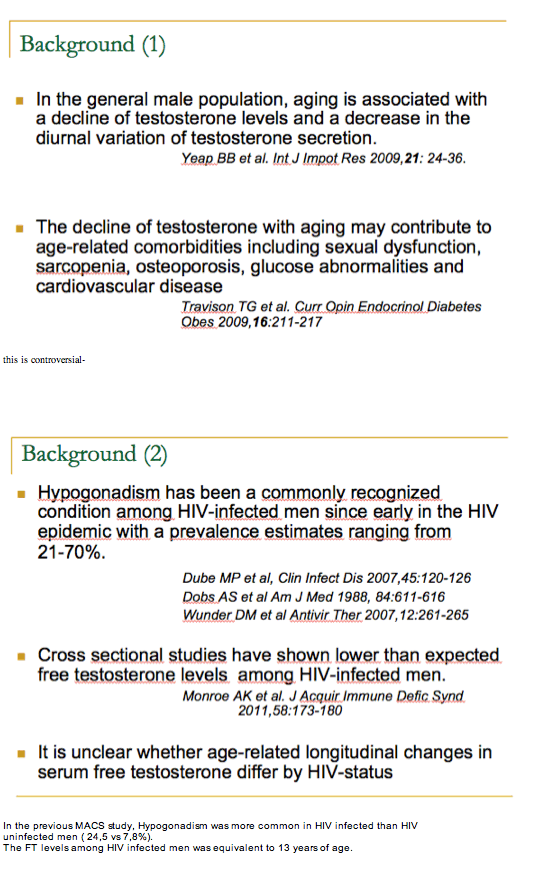

Program abstract:
Longitudinal changes in free testosterone among older HIV-infected and HIV-uninfected men
L Slama1,2, LP Jacobson3, X Li3, FJ Palella, Jr2, JB Margolick4, L Kingsley5, D Wiley6, G Pialoux1, A Dobs7, TT Brown7
1Tenon Hospital, Infectious Diseases, Paris, France; 2Northwestern University, Feinberg School of Medicine, Infectious Diseases, Chicago, IL, USA; 3Johns Hopkins University, Epidemiology, Baltimore, MD, USA; 4Johns Hopkins University, Infectious Diseases, Baltimore, MD, USA; 5University of Pittsburgh, Infectious Diseases, Pittsburgh, PA, USA; 6University of California, School of Nursing, Los Angeles, CA, USA; 7Johns Hopkins University, Endocrinology, Diabetes and Metabolism, Baltimore, MD, USA
Background: In the general population, aging is associated with lower testosterone levels and a decrease in the diurnal variation of testosterone secretion. Although cross-sectional studies have shown lower than expected testosterone levels in HIV-infected men, it is unclear whether age-related longitudinal changes in serum testosterone differ by HIV serostatus.
Methodology: We identified HIV-infected men from the Multicenter AIDS Cohort Study (MACS), age ≥45 years at initiation of highly active antiretroviral therapy
(HAART), who had ≥1 serum sample available prior to HAART initiation (that is, the baseline visit) and ≥2 serum samples in the 10 years following HAART initiation.
They were matched to HIV-uninfected men by age, race, MACS site and calendar time of pre- and post- HAART samples. Men reporting exogenous hormones of any kind and/or had free testosterone concentrations (FT)>150 ng/dl, suggestive of unreported testosterone use, were excluded. Linear mixed-effects regression was used to determine whether log FT and its rate of change over the study interval differed by HIV serostatus.
Results: Data were available from 182 HIV-infected and 267 HIV-uninfected men. The median age at baseline was 48.8 years (interquartile range [IQR] 45.8, 53.4). The median number of FT measurements per participant was 4 (IQR; 3, 5) drawn over a median of 6 years (IQR 2.9, 9.5). Of the 1,737 samples analysed, 65% were drawn in the morning. After adjustment for age, race, BMI, hepatitis C status, smoking, the presence of diabetes mellitus and MACS site, median baseline FT levels were significantly lower among HIV-infected men than HIV-uninfected men in morning samples (67 ng/dl [95% confidence interval (CI): 65-71] vs 72 ng/dl [95% CI: 69-74], respectively; P=0.037), but not in afternoon/evening samples (65 ng/dl [95% CI: 62-69] vs 65 ng/dl [95% CI: 62-67], respectively; P=0.728). However, the annual rate of FT decline after adjustment for time of day of the sample draw and other covariates did not differ significantly by HIV serostatus: -1.1% for HIV-infected men (95% CI: -0.4%, -1.8%) vs -1.0% for HIV-uninfected men (95% CI: -0.6%, -1.5%), P=0.913.
Conclusions: FT decreased similarly over a 6-year interval in older HIV-infected and HIV-uninfected men, but morning FT levels were lower among HIV-infected men, but not afternoon/evening levels. These data may suggest a loss of diurnal variation in FT among HIV-infected men.
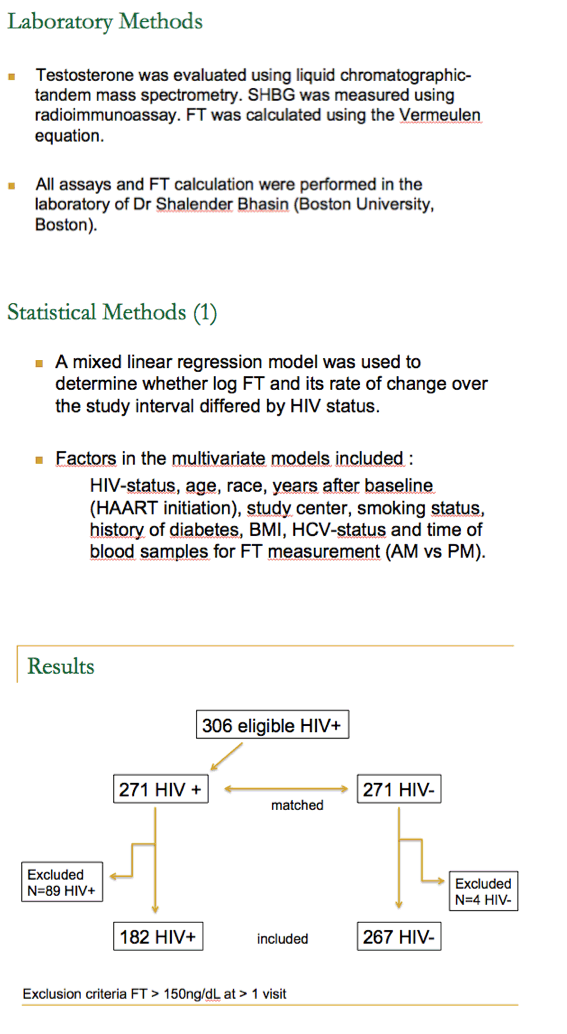
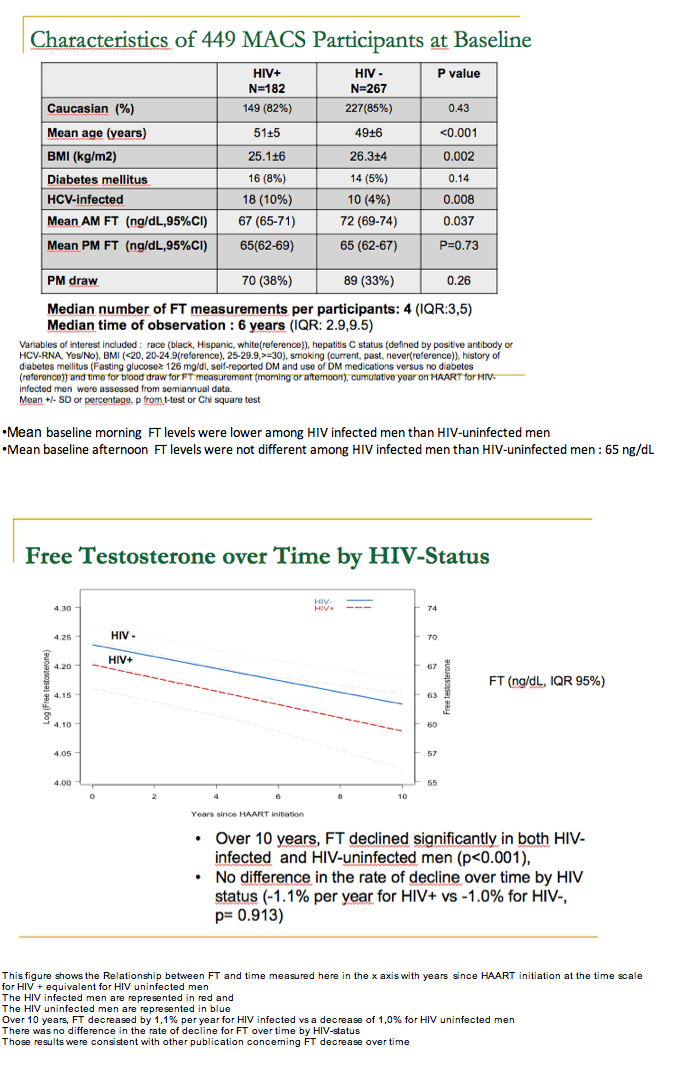
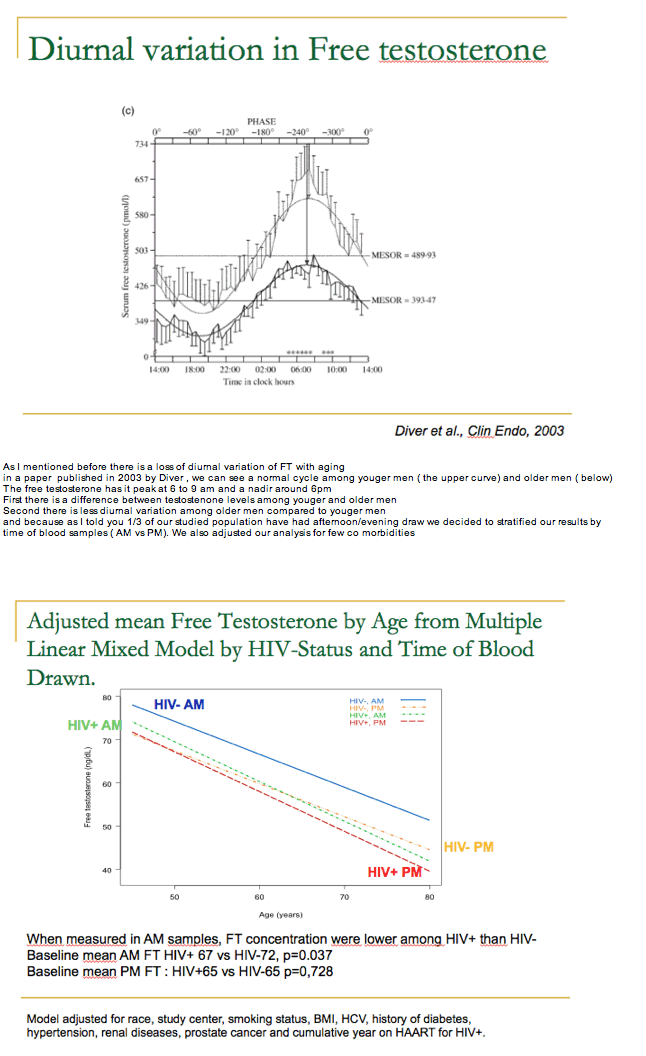
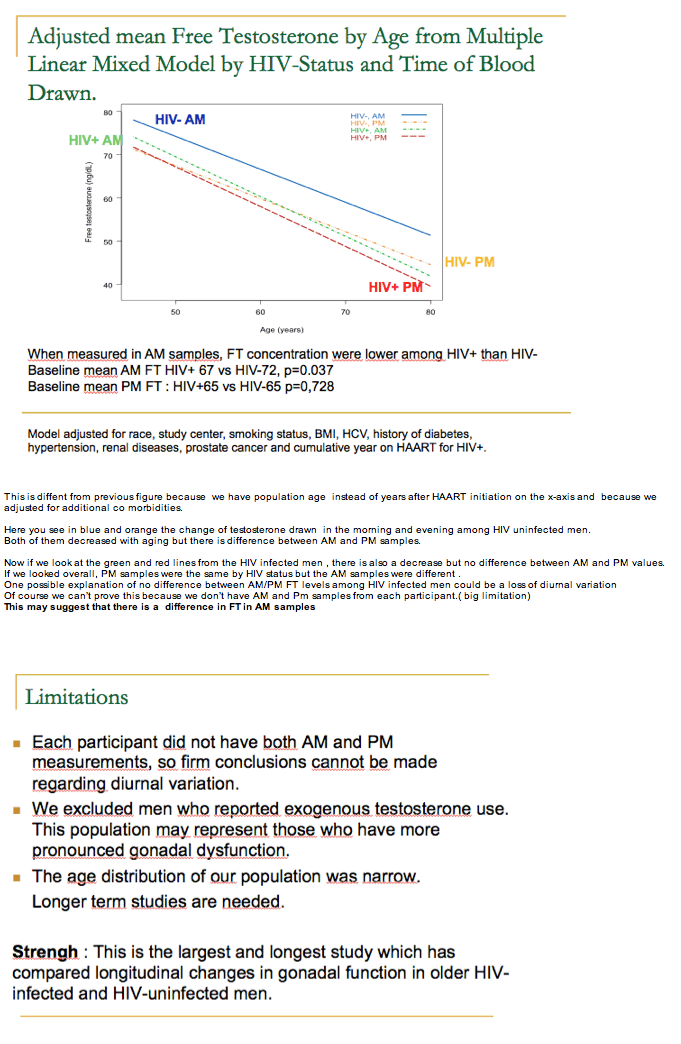
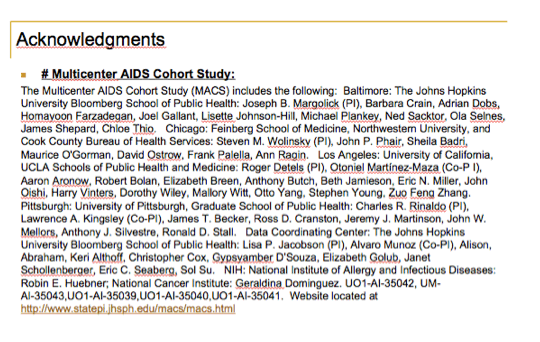
|
| |
|
 |
 |
|
|